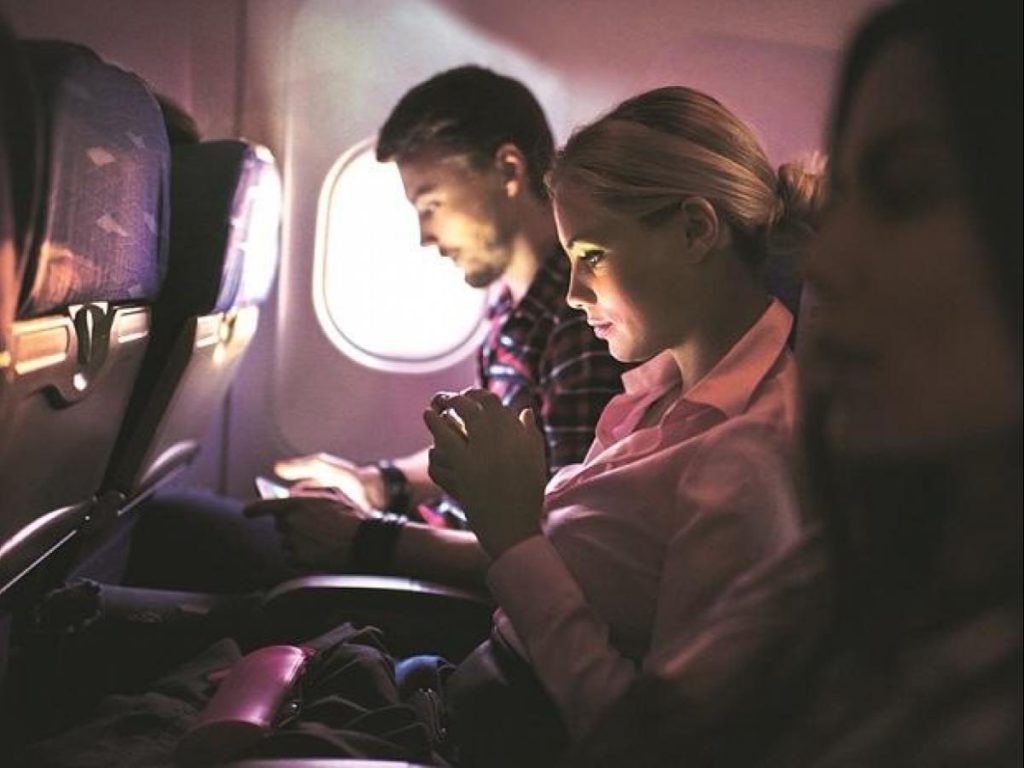Mobile phones, portable video game units, tablets, and other devices are our time killers. We play games on them and communicate with our family and friends. So, if you think that these electronic devices come in very handy to pass the time during a multi-hour airplane flight, then you are absolutely wrong. People who have traveled by flight are familiar with the preflight reminder to turn off all your electronic devices or keep them in “airplane mode“. So, have you ever wondered why it is important to turn off your electronic devices when you are flying? Well, you may have thought about or even tried to use your phone while on the flight. There is science behind this question.

Credits@GoogleImages
WHY SHOULD OUR ELECTRONIC DEVICES BE TURNED OFF?
The use of portable devices is not allowed below 3000m even in ‘flight mode’ because they restrict the transmission of signals. Above this height, all electronic devices like: music players and laptops can be used but, phones have to be switched off. This instruction should be followed to avoid interference between signals from these devices and sensitive onboard electronic systems.
Turning off your electronic devices is for the passenger’s safety. So, whether you realize it or not, electronic devices emit radio waves that can disturb the nearby atmosphere. It amounts to the interference with sensitive electronic components in the cockpit of the plane.
The avionics of an airplane requires the most accurate information to navigate. It keeps all parts of the plane working harmoniously. Also, when devices are kept ‘ON’ the signals are interrupted, and avionic components change their readings and trigger the system to make fine adjustments unnecessarily. It is not just the mobile phones, iPods, kindle, laptops, and consoles to emit radio waves. If these are at frequencies close to those of the avionics, signals get corrupted. It will affect systems such as radar, communications, and collision avoidance technology. However, if these gadgets are damaged, they start emitting stronger radio waves.

Credits@GoogleImages
Our cell phones on a plane:
So, no one wants to send signals that will interfere with radar, navigation, ground communication, and collision avoidance technologies. Also, there is a surplus of anecdotal evidence suggesting that radio waves can cause safety issues during flight. Hence, passengers get instructions to keep their phones in airplane mode while flying.

Credits@GoogleImages
The airplane mode:
Airplane mode gets activated from the dropdown menu on the main screen of your phone or other electronic devices. This mode blocks your smartphone from connecting to networks, Bluetooth, or Wi-Fi. It means that you are unable to make calls or browse the internet. Activate this mode to make sure that your phone signals do not create havoc while traveling.
Procedures to follow:
So, when you are boarding your flight, it is best to not only turn off all your electronic devices but ensure that your phone is in airplane mode. In this mode, our Wi-Fi connectivity is disabled, and cellular signals get blocked throughout the flight. It also helps you save much-needed battery life so that you can use it longer. It is always necessary to check the regulations of the airline when you are booking your flight. Yes, it can be a bit frustrating task at times, but turning off your electronic devices and putting your phone in this mode helps prevents GPS signals and wireless technology from causing complex issues in the cockpit. It also means that people who are on their phones or computers most of the time will have to refrain from secretly checking their work or personal emails for a few hours.

Credits@GoogleImages
Rules and regulations:
This theory caught a lot of attention in the aviation industry as there was a ban on handheld electronics in some regions. The United Kingdom is the first country to ban electronic devices for passenger’s safety. So, there are overall 10 airlines who are following this protocol. If passengers do not comply with this rule, they will be prosecuted.







